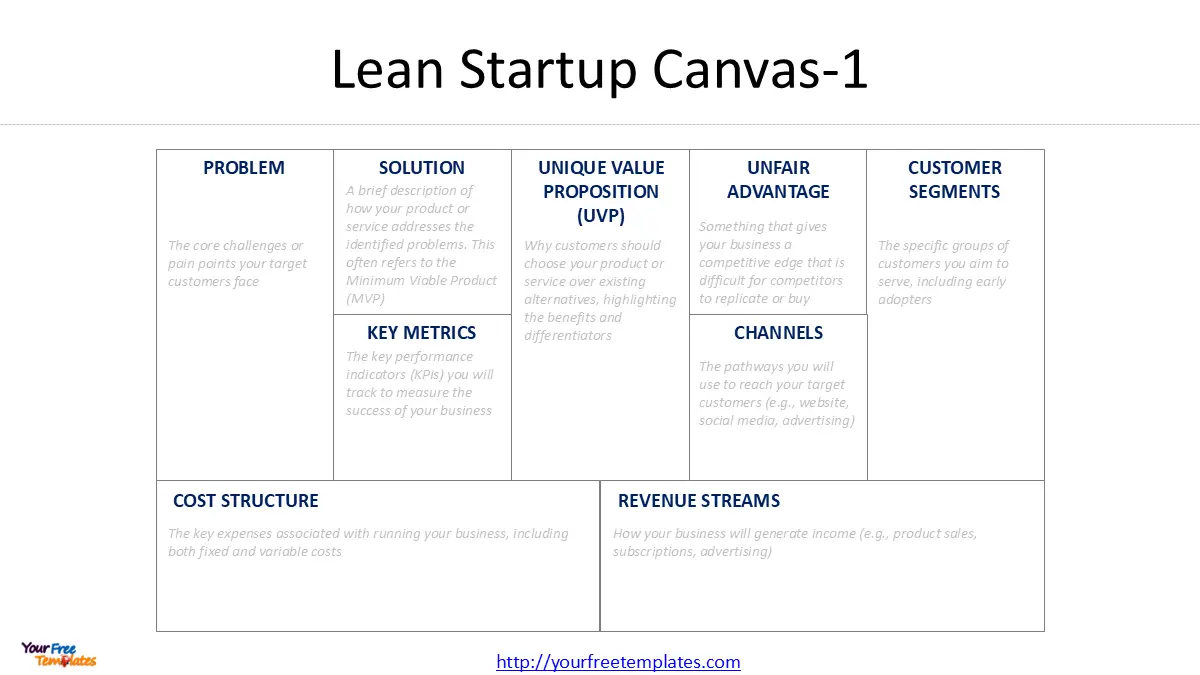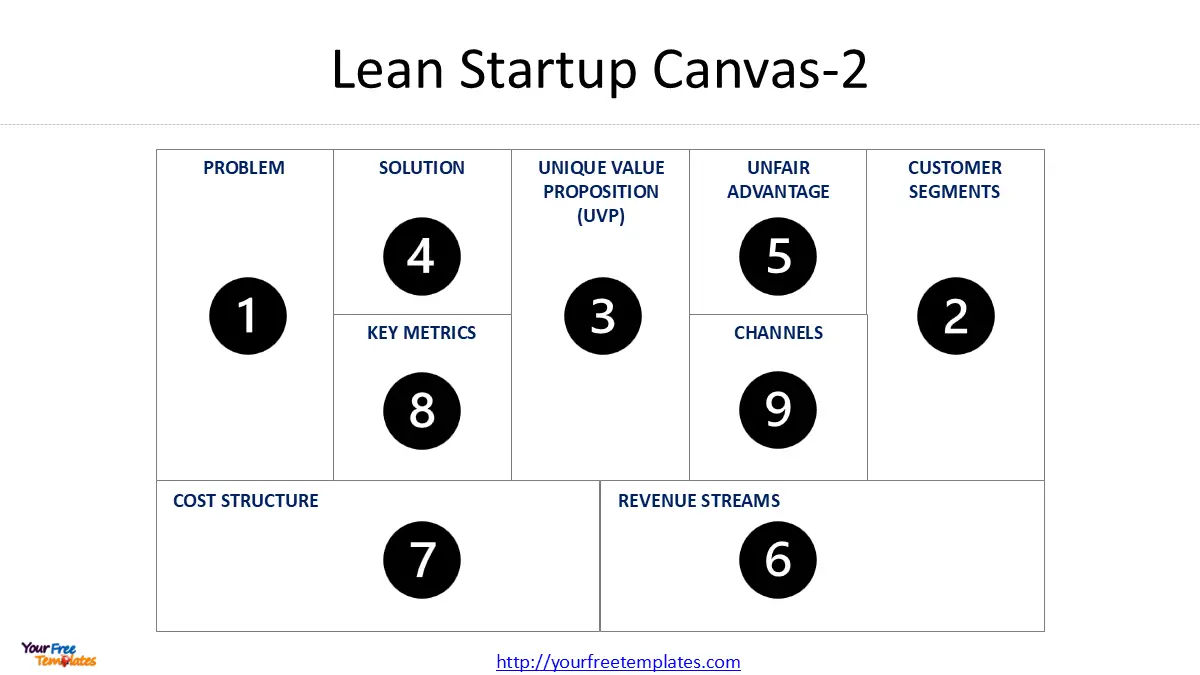Introduction
Starting a business without a clear plan is like driving blindfolded—you’ll likely crash before reaching your destination. Traditional business plans are too rigid for startups, which is why Ash Maurya’s Lean Canvas has become a go-to tool for entrepreneurs.
The Lean Startup Canvas is a one-page business model that helps you:
✔ Identify key risks before wasting time and money.
✔ Focus on problems and solutions rather than lengthy planning.
✔ Pivot quickly based on real customer feedback.
In this guide, you’ll learn how to fill out each section of the Lean Canvas, see real startup examples, and avoid common mistakes. Let’s dive in!
At the end of this post, you can download our Lean Startup Canvas PowerPoint template to fit your purpose. As the same diagram PowerPoint template series, you can also find our ADKAR Model, rms market share, Energy-as-a-Service, the impact of climate change on international business strategies, Blockchain in Renewable Energy, SPACE Matrix, Bowman’s Strategy Clock, Value Chain Analysis, Climate Change, Carbon Neutral Meaning, Renewable Energy Sources, Generative AI, Circular Economy, Blue Sea Strategy, 2025 Calendar with Holidays, The 7 Habits of Highly Effective People, Six Thinking Hats, Pareto Chart, Occam’s Razor, Data Mining, marketing segment, Porter’s five forces, SWOT Analysis, GE Matrix, BCG Matrix, Artificial Intelligence, National Diamond and BlockChain PowerPoint templates.

Step-by-Step Guide to Filling Out the Lean Startup Canvas
1. Problem (Top 3 Customer Pains)
What to write: List the top 1-3 problems your customers face. Be specific!
❌ Bad: “People need better productivity tools.”
✅ Good: *”Freelancers waste 3+ hours a week manually tracking invoices.”*
Example:
-
Dropbox’s Problem: “People lose files when switching between devices.”
2. Solution (Minimum Viable Product – MVP)
What to write: The simplest version of your product that solves the problem.
❌ Bad: “A fully automated AI-powered tool.”
✅ Good: “A cloud folder that syncs files across devices.”
Example:
-
Airbnb’s Solution: “A website where people can rent out spare rooms.”
3. Key Metrics (How You Measure Success)
What to track: Avoid vanity metrics (e.g., “website visits”). Focus on actionable data:
-
SaaS: MRR (Monthly Recurring Revenue), Churn Rate
-
E-commerce: Conversion Rate, Customer Lifetime Value (LTV)
Lean Canvas Example:
-
Uber’s Early Metric: “Number of completed rides per week.”















